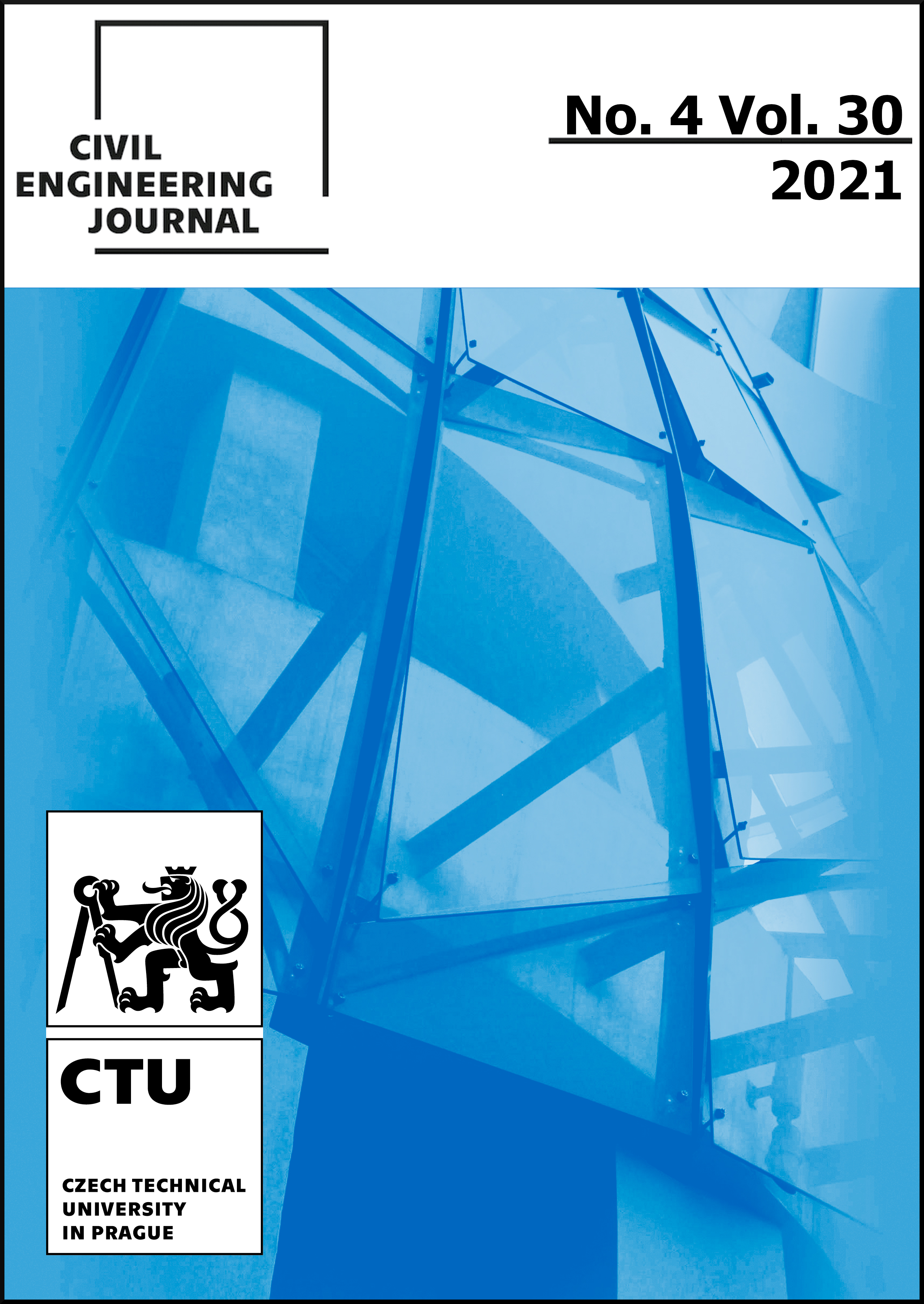THE HYDRAULICS OF NATURE-LIKE FISHWAYS
DOI:
https://doi.org/10.14311/CEJ.2021.04.0063Abstract
Nature-like fishway arrangements are commonly used because these structures imitate the characteristics of natural rivers and effectively allow fish to migrate past river sections blocked by hydraulic structures. In this paper, physical models were analyzed, and the velocity distributions of two different fishway structures (Types I and II) were compared. Results showed that the maximum mainstream velocity of the Type I structure was 5.3% lower than that of the Type II structure. However, the average mainstream velocity of the Type I structure was 21.1% greater than that of the Type II structure. The total per-cycle length of the mainstream path in the Type II structure was 2.1 times greater than that of the Type I structure, which indicated that the length of the mainstream path was somewhat proportional to the average velocity of the mainstream. When the flow rate was kept constant, increases in the velocity of the main flow associated with changes in the internal structure of the fishway decreased the average velocity of the main flow, while decreases in the total length of the flow path led to increases in the average velocity of the main flow. Due to frictional head loss along the fishway and local head loss, as well as the overlaps between these factors, the overall flow rate gradually decreased every cycle, despite periodic fluctuations.
Downloads
References
Mao X, Li J, An R, Zhao W, Li K., Li R, Deng Y, Liang X., Yang M, Zhang J., Tang K., 2019. Study of key technologies for fishways in the plateaus of western China. Global Ecology and Conservation, vol. 20, e00755.
Mao X., 2018. Review of fishway research in China. Ecological Engineering, vol. 115: 91-95.
Nyqvist D, Elghagen J, Heiss M, Calles O., 2018. An angled rack with a bypass and a nature-like
fishway pass Atlantic salmon smolts downstream at a hydropower dam. Marine and Freshwater Research, vol. 69(12): 1894-1894.
Gustafsson S., 2012. Macroinvertebrate colonization of a nature-like fishway : The effects of habitat design. Ecological Engineering, vol. 61(19): 345-353.
Li G, Sun S, Zhang C, Liu H, Zheng T., 2019. Evaluation of flow patterns in vertical slot fishways with different slot positions based on a comparison passage experiment for juvenile grass carp. Ecological Engineering, vol. 133: 148-159.
Tamario C, Degerman E, Donadi S, Spjut D, Sandin L., 2018. Nature‐ like fishways as compensatory lotic habitats. River Research and Applications, vol. 34(3): 253-261.
Muraoka K, Nakanishi S, Kayaba Y., 2017. Boulder arrangement on a rocky ramp fishway based on the swimming behavior of fish. Limnologica - Ecology and Management of Inland Waters, vol. 62: 188-193.
Li S, Ding X, Liu D., 2014. Review of natural-like fishway. Yangtze River, vol. 96: 70-73. (in Chinese)
State Key Laboratory of Hydraulics and Mountainous River Development and Protection, Sichuan
University, 2016. Hydraulics(5th edition)( Volume one) 533 pp. (in Chinese)
Chen K, Tao J, Chang Z, Cao X, Ge H., 2014. Difficulties and prospects of fishways in China: An overview of the construction status and operation practice since 2000. Ecological Engineering, vol. 70: 82- 91.
Mao X, Zhang J, Tang K, Zhao W., 2019. Designs for T shape fishways. The Civil Engineering Journal 2019, vol. 28 no. 2: 270-280.
Larinier M, Travade F, Porcher J., 2002. Fishways: biological basis, design criteria and monitoring.
Downloads
Published
Issue
Section
License
Copyright (c) 2021 Author

This work is licensed under a Creative Commons Attribution-NonCommercial 4.0 International License.
Authors who publish with this journal agree to the following terms:
- Authors retain copyright and grant the journal right of first publication with the work simultaneously licensed under a Creative Commons Attribution License that allows others to share the work with an acknowledgement of the work's authorship and initial publication in this journal.
- Authors are able to enter into separate, additional contractual arrangements for the non-exclusive distribution of the journal's published version of the work (e.g., post it to an institutional repository or publish it in a book), with an acknowledgement of its initial publication in this journal.
- Authors are permitted and encouraged to post their work online (e.g., in institutional repositories or on their website) prior to and during the submission process, as it can lead to productive exchanges, as well as earlier and greater citation of published work (See The Effect of Open Access).
How to Cite
Accepted 2021-12-28
Published 2021-12-31











